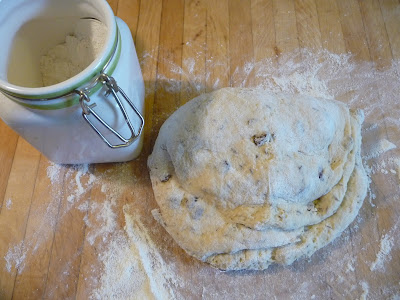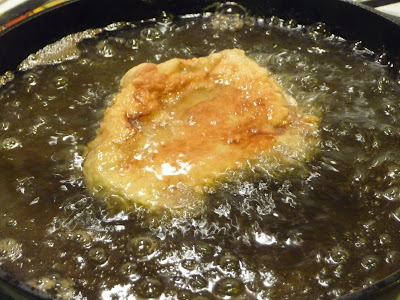The recipe for this meal is super long, so I'll keep my babbling to a minimum. I made stock early last week because, well, I don't have a reason why. My freezer is still pretty full, and I'll be getting a new third of a cow at the end of summer, so I need to get cookin', I guess. I wasn't sure what I was going to make with the stock, but I had pho in mind (see more on that below).
Pho is way easier than I thought it would be, though getting the broth just right is not easy (more on that below too).
Whatever, here's the recipe.
For beef stock:
2 medium yellow onions, chopped roughly
2 medium carrots, chopped roughly
4 stalks celery, chopped roughly
4-inch piece ginger, peeled
5-6 pounds beef soup bones (marrow and knuckle bones)
8 - 10 peppercorns
Note: the below is how I made my stock because I wasn't sure I was going to use it all for pho. I made a semi-traditional brown stock. To make a stock specifically for pho, do not roast the beef bones, do not add celery or carrots, and add 5 star anise, 6 whole cloves, and a cinnamon stick to the stock in the beginning. If I was ever to make stock specifically for pho, I would probably make pork stock, actually.)
1. Roast the onion, carrot, celery, and ginger on a cookie sheet in the oven for 15 - 25 minutes. Use tongs to occasionally rotate them and to grab and discard any flyaway onion skin. You do not have to blacken entire surface, just enough to slightly cook them. Roast the beef bones in the oven for 25 - 30 minutes.
2. Place the roasted vegetables, beef bones, and peppercorns in a stock pot (minimum 12-quart capacity) and cover with cold water. Over high heat, bring to boil. Reduce heat to a simmer and simmer for 6 - 12 hours. In the beginning, skim off any fat and impurities from the surface of the stock.
3. Once done, strain the stock through fine strainer. Discard solids.
4. Cool the stock and refrigerate it overnight. Makes about 4 quarts.
For pho broth:
1 1/2 tablespoons salt
4 tablespoons fish sauce
1 ounce (1-inch chunk) yellow rock sugar (duong phen; see Note)
1. Remove the stock from the fridge, and skim the fat off the top.
2. Ladle the amount of stock you intend to use into a large saucepan. Add the salt, fish sauce, and sugar - but not all the quantity stated above unless you are using the all the stock you made, adjust the quantities to the amount you are using.
3. Taste and adjust flavor with additional ingredients if you would like. The pho broth should taste slightly too strong because the noodles and other ingredients are not salted. (If you've gone too far, add water to dilute.)
For pho bowls:
1 1/2-2 pounds small (1/8-inch wide) dried or fresh banh pho noodles ("rice sticks'')1/2 pound raw eye of round, sirloin, London broil or tri-tip steak, thinly sliced across the grain (1/16 inch thick; freeze for 15 minutes to make it easier to slice)For pho bowls:
1/3 cup chopped cilantro
Ground black pepper
Garnishes:
Asian/Thai basil (hung que)
Bean sprouts (about 1/2 pound)*
Red hot chiles (such as Thai bird or dragon), thinly sliced
Lime wedges
Hoisin sauce
Sriracha
*I don't like bean sprouts so didn't include them, but it is traditional to do so.
The key is to be organized and have everything ready to go.
1. Place the basil, sliced chiles, and lime wedges on a garnish plate.
2. Heat the pho broth (should already be heating) and ready the noodles. To ensure good timing, reheat broth over medium flame as you're assembling bowls. If you're using dried noodles, cover with hot tap water and soak 15-20 minutes, until softened and opaque white. Drain in colander. For fresh rice noodles, just untangle and briefly rinse in a colander with cold water.
3. Blanch noodles. Fill 3- or 4-quart saucepan with water and bring to boil. For each bowl, use long-handle strainer to blanch a portion of noodles. As soon as noodles have collapsed and lost their stiffness (10-20 seconds), pull strainer from water, letting water drain back into saucepan. Empty noodles into bowls. Noodles should occupy 1/4 to 1/3 of bowl; the latter is for noodle lovers, while the former is for those who prize broth.
4. If desired, after blanching noodles, blanch bean sprouts for 30 seconds in same saucepan. They should slightly wilt but retain some crunch. Drain and add to the garnish plate.
5. Add other ingredients to the bowl. Place slices raw meat atop noodles. Garnish with chopped cilantro (thinly sliced onion and scallions are other garnishes, but I don't like either). Finish with black pepper.
6. Bring broth to rolling boil. Check seasoning. Ladle broth into each bowl, distributing hot liquid evenly so as to cook raw beef and warm other ingredients. Serve your pho with with the garnish plate.
I think my first foray into pho was a success. I am spoiled here in Portland with a vast number of excellent pho places, and the fact that mine even semi-stood up made me happy.
Here is the pho I ate while watching baseball last Friday night. A fine Friday night indeed.
Bon appetit.










































